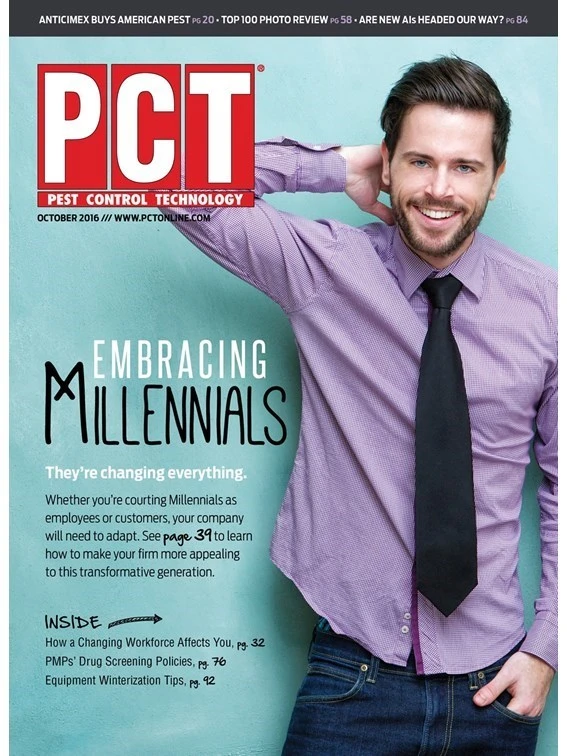
Baseball purists will always say, “You can never have enough pitching” in order to win a World Series title and when it comes to spreading positive messages about the true value pest management services provide society, the same applies.
More than three-quarters of the respondents to a Bayer Global PCO Survey feel a better effort is needed to explain the benefits professional pest management services offer society (see chart below).
In the U.S., the Professional Pest Management Alliance (PPMA) has led the charge to educate, inform and help positively change the perception consumers, media and regulators have of the industry.
The alliance, which has secured more than 1,300 consumer media placements via news articles or segments as of Aug. 31, equaling more than 870 million impressions, worth an estimated $90.8 million in estimated ad value, has done yeoman’s work since its inception to positively alter how the industry is viewed and how its services are valued.
“On a whole the industry has done a solid job projecting a more professional message to the media and consumers, and PPMA deserves a lot of credit for this,” says Mike Rottler, president of Rottler Pest & Lawn Solutions in St. Louis.
As the industry invested its time and efforts to improve its image through targeted advertising, public relations and social media, Rottler too devoted resources to raising awareness for the services he offers to consumers in the St. Louis market.
Rottler estimates his company appeared more than 40 times a year in the local media over the last year addressing issues ranging from stinging insects and bed bugs to setting the record straight on the Zika virus.
The increased exposure has helped the company with its residential pest program sales, according to Rottler, who says consumers view the professional pest management industry as experts after consistently seeing him and other industry experts on camera or being quoted in a story.
“Today’s consumer is better informed about the threat pests pose and that is due in part to the collective effort the industry has made to make accurate, helpful information readily available,” says Rottler.
The St. Louis-based operator credits the NPMA’s “protectors of public health and property” branding effort as a turning point in helping consumers better understand the value of the industry’s services.
“It gave the industry an ‘elevator speech’ to share with consumers about what we do, how we do it and how it benefits them,” says Rottler. “It has created an opportunity to share more information with customers, create demand for increased training for technicians and make pest control a more attractive career opportunity.”

While the do-it-yourselfer will always be part of the mix with consumers battling ant or mice issues, Rottler says today’s Generation X and Millennial consumers have shown a penchant to hire-out for professional home services, including pest control and lawn care.
Woven within that hire-out trend is an area that Rottler says concerns him — the increasing “Uberization” of pest services by companies such as Angie’s List, Google and others. The concern is these offerings could drive prices and service quality down — two areas the industry has fought hard over the years to overcome.
“Who gets the shelf space so to speak with these third-party brokers?” asks Rottler. “Are those companies capable of proving a full breadth of services to the consumer and will the quality be there consistently over the long-term? Those questions need to be answered.”
The second-generation pest professional who started working in the industry as a teenager for his father says there is always room for improvement when it comes to sharing and explaining the importance of the work done by PMPs on a daily basis to protect homes and businesses from pests.
“The level of professionalism must remain high for our efforts to be effective and we need to continue to evolve,” says Rottler. “Our industry is easy to enter and we have to make sure training and education remains a big part of what we do because that is what sets us apart in the end.”
The author is a frequent editorial contributor to PCT.

Explore the October 2016 Issue
Check out more from this issue and find your next story to read.
Latest from Pest Control Technology
- Donny Oswalt Shares What Makes Termites a 'Tricky' Pest
- Study Finds Fecal Tests Can Reveal Active Termite Infestations
- Peachtree Pest Control Partners with Local Nonprofits to Fight Food Insecurity
- Allergy Technologies, PHA Expand ATAHC Complete Program to Protect 8,500 Homes
- Housecall Pro Hosts '25 Winter Summit Featuring Mike Rowe
- Advanced Education
- Spotted Lanternflies, BMSBs Most Problematic Invasive Pests, Poll Finds
- Ecolab Acquires Guardian Pest Solutions





